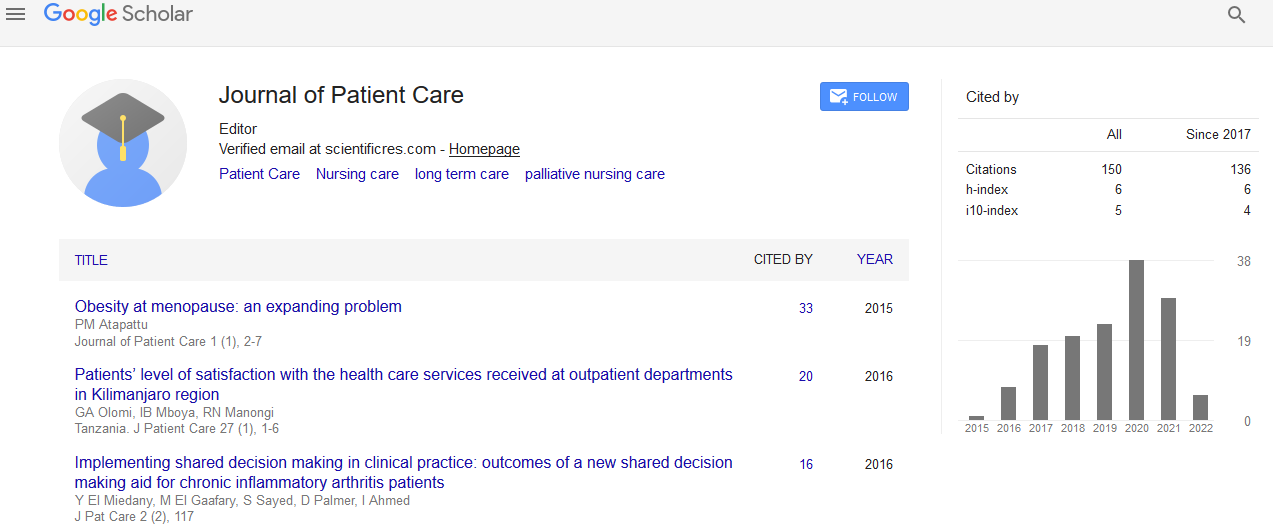Indexed In
- RefSeek
- Hamdard University
- EBSCO A-Z
- Publons
- Geneva Foundation for Medical Education and Research
- Euro Pub
- Google Scholar
Useful Links
Share This Page
Journal Flyer

Open Access Journals
- Agri and Aquaculture
- Biochemistry
- Bioinformatics & Systems Biology
- Business & Management
- Chemistry
- Clinical Sciences
- Engineering
- Food & Nutrition
- General Science
- Genetics & Molecular Biology
- Immunology & Microbiology
- Medical Sciences
- Neuroscience & Psychology
- Nursing & Health Care
- Pharmaceutical Sciences
Abstract
Prevalence, types and risk factors of congenital anomalies (A hospital Based study
Congenital anomalies (CA) are common causes of infant’s and childhood deaths and disability.
Objectives: The aim of the study is to determine the prevalence, describe the types and risk factors of congenital anomalies among newborns admitted to Neonatal Intensive Care Unit (NICU) of a Children's Hospital.
Study design: It is a prospective observational study(analytic cross sectional study) was performed and screening of the newborn admitted at NICU of a Children's Hospital during the period of 6 months from 1 to 12-2017 to the end of 5-2018. The sample was 346 newborns, 173 cases and 173 controls. We collected data using a record checklist and an interviewing questionnaire.
Results: There were a significant difference between cases and control concerning gestational age (P=0.001), single or multiple babies (P=0.002), residence (P=0.001), consanguineous marriage (P=0.01) and family history of unfavorable outcome (P=0.001). We also found that the most common type of congenital anomalies was gastrointestinal anomalies 63 cases (36.4%) with trachea esophageal fistula 17 cases (27%) being the most common GIT anomalies.
Conclusion: The prevalence of congenital anomalies was 22.97%. The most common anomalies were gastrointestinal anomalies (GIT), musculoskeletal anomalies, multiple anomalies and circulatory system anomalies. The risk factors were consanguineous marriage, positive family history, urban areas, full-term and singleton pregnancies.
Published Date: 2021-01-29;

